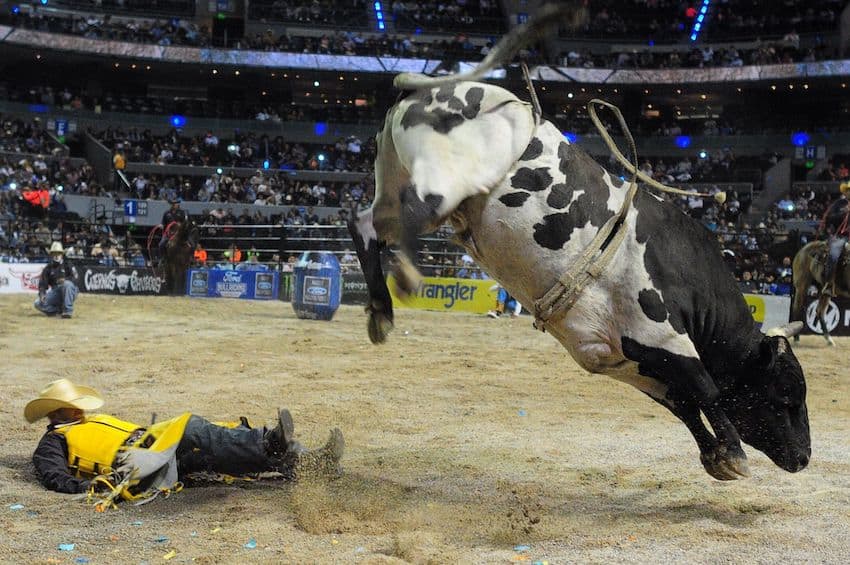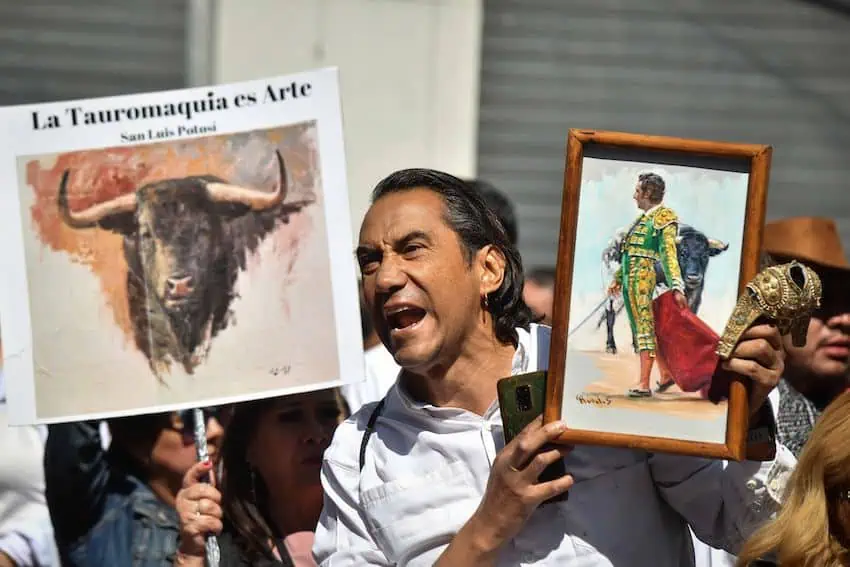In Mexico, lawmakers changed the course of the history of the bull by voting on Tuesday by voting on Tuesday to ban the killing of bulls and use swords or other sharp objects that can hurt wounds.
Recognized by the 61-1 law, the view of the scene is “non-violent bull fight” or “bloodless bull fight” effectively-although the new law is only applicable in Mexico, the world’s largest Bulling Plaza Mexico.
“Today we are taking a step towards a new relationship with animals – not based on peers dominance, but respect for respect,” said Daniela Alwarez Newspaper El Universal, president of the Constitutional issues and citizens of citizens. “This reform is not aimed at destroying history, but rather aimed at writing a new chapter in tradition and compassion.”
Animal rights enthusiasts and Mexico city mayor Clara Brugada celebrated this move as a big victory. Brugata, President Claudia Shinebam appreciated the initial proposal to ban the bulls that were killed or injured He said capital would now be a place of “respecting the rights of animals”.
“The scene of the blood cannot be justified as art or tradition,” he said. “Culture develops. We have a responsibility to change it in favor of animal welfare.”
Study A Mexico City Government Report, Changes to Animal Welfare Act
- Violent bull fights or bulls are traditionally not wounds or variations that meet death – such as Regonios (Bull fight on horseback), Batter (Featuring new bull players and younger bulls) and Becardas (Training exercises).
- Creating the concept of “violently non -violent bull fight scene”.
- Do not kill the bull inside or outside the bull; When the scene is over, the animals will be returned to their flock.
- The protection of the body’s body integrity avoids misconduct before and after the event.
- Eliminating the use of sharp objects such as pandarillas, swords and lanes allows only the use of cape and mulata (small red fabric used at the end).
- Placing in the horns of the bull to avoid harmful to people or other animals.
- Each bull fight is controlled for 15 minutes, according to several sources or 30 minutes, the newspaper reported Country.

The referendum on Tuesday seemed to be a compromise between the two battleing sides of the debate. Since 2009, more than 20 attempts have been introduced in Mexico to ban the bull fight.
Although a barrier was composed in 2022, One and a half years later, that Raised by the Supreme Court of Mexico. It has led to Bull fight at Plaza Mexico one day in January 2024, Should The judgment of a judge suspends such an action Within three days of seeing nearly 40,000 fans – and six bulls were killed.
Plaza Mexico, also known as the Memorial Plaza de Toros, has been conducting bull fights since 1946, and is the only functional place for the game in Mexico. It is 41,200, but sometimes has more than 50,000 viewers.
The new law, which emerged from a citizens’ attempt by September 2024, provoked angry struggles from the bull fighting supporters and the Madaders, some of them tried to violate a police barrier outside the government building. A person carried an identity, “Being a fan of the bull is not a crime. It’s proud.”
If considered a tradition and a pastime in Latin America and the Iberian Peninsula, the bull fight has been criticized for the cruelty of animals because the bulls are usually killed at the end of the fight. Animal rights groups suggest that about 180,000 bulls are killed every year in a bull fight worldwide.
“This is an act of dying a bullock of a bulb. It is its nature … it’s an animal,” a bull fight fan shouted at a megaphon outside the City Hall.

Artero Saldivar also protested against a professional bull fighter, and expressed concern over the future of his business and the survival of the fight bull.
The Mexican bull fighting entrepreneurs indicate that 40,000 direct jobs and 80,000 indirect jobs are in danger.
Also, this decision will affect local businesses and tourism. According to the newspaper expansion that the restaurants and hotels near Plaza de Toros have traditionally increased by up to 60% during the bull fighting season.
The “violent bull fight” is practiced in the traditional Portuguese festivals in the Dominican Republic, Costa Rica, Tanzania, parts of Bolivia and California. However, most of those procedures are not legally recognized or formally built as the new regulations of Mexico.
In other Mexican states or cities, enthusiasts are now focusing on their attention. Study Humanitarian world for animals, Previously called the Human Society, the bull fight Sonora, Kuerro, Sinalova, Kohuwila and Quintana rupees, but it is legal in all other states and has been given the status of “the abomination of cultural heritage” in at least eight states.
With reports from UniversalOvarian CountryOvarian Associated Press And Xezelcier
(Tagstotranslate) Animal Rights (T) Animal Welfare Law (T) Bullless Bullfights (T) Mexico City (T) New Law (T) Plaza Mexico (T) Violence-Fream SpeCTAcle
Story Credit








